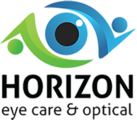
- Blog
- How Early to Start Kids on Myopia Management?
How Early to Start Kids on Myopia Management?
Published:
The rate of myopia in children has continued to increase, with one in every three children suffering from the condition. Eye experts are constantly coming up with myopia control techniques to halt the progression of the disease.
Children today are developing myopia earlier than ever before. Left untreated, the condition can progress rapidly. It can become severe before the child reaches early adulthood. Fortunately, there are effective ways to slow myopia progression and prevent the development of high myopia.
Developing Myopia
Myopia is partly hereditary, leaving kids who have myopic parents with a high risk of developing the condition. Many parents who have myopia are hoping to get early intervention for their children to keep them from developing the condition.
Many experts believe that less outdoor time and an increase in screen time have contributed to the growth of myopia in kids. Myopia can lead to difficulties in school and other activities as a result of poor vision and increased eye diseases.
Early Intervention
High levels of myopia increase a child’s risk of developing serious eye conditions like glaucoma and retinal disease. Early intervention is vital for slowing or even halting the progression of myopia.
Many treatments can help improve children’s vision. They also reduce eye-health risks associated with the condition. Children who are less long-sighted than is normal for their age are more likely to develop myopia.
Starting Myopia Management
Most parents want to find out when the right time to start myopia management for their kids is. When it comes to myopia control, there is no age requirement. Children as young as three years have received myopia control treatment.
Eye specialists recommend that management begin as soon as the issue has been identified. This means that if your child has a high risk of developing the condition, you should start treatment immediately. This can reduce your child’s long-term risk of developing serious eye conditions.
High-Risk Category
Research has shown that there is a high-risk category for developing childhood myopia. Children who are seven years old and under when they are first diagnosed with myopia are high-risk. The younger the child is, the higher the risk for severe myopia.
These children have more time for the eyeballs to continue growing and elongating through adolescence and teenage years. Eye doctors analyze data for each child to find out their myopia progression rate per year. This helps confirm whether the child is experiencing rapid progression.
Choosing Myopia Management
Several treatments are used for myopia management. Doctors can help determine the best treatment for each child. The right treatment is based on several factors, including the child’s age, maturity level, and disease progression. Treatments range from atropine treatment to special corrective lenses. Research shows that spending more time outdoors can help delay or prevent the onset of childhood myopia.
The best way to protect your child’s eye health is by scheduling routine visits to the eye doctor. Comprehensive eye examinations are crucial for detecting different eye conditions. Some tests can help determine if a child will become myopic. Predictions can be made based on the current refractive error level.
For more on myopia management for kids, contact Horizon Eye Care & Optical at our office in Sugar Land, Texas. You can call (281) 313-2020 today to schedule an appointment.
